Hip dysplasia is hereditary and more common in large cats
That you X-ray the hips of dogs, most people know and few question this, but for some reason the same check on cats causes furrowed eyebrows, questioning faces and comments, but the fact is that the problem also exists with our cats. The health program for Hip Dysplasia in Maine Coons was started here in Sweden in 2000, which is 23 years ago at the time of writing. The health program was started because there were signs that the breed could have problems with hip dysplasia. It turned out that hip dysplasia indeed was relatively common - around 35-40 percent of the cats were affected.
Then what is Hip Dysplasia or HD for short?
HD is a defect in the socket of the pelvis, which means that the socket is not as deep as it should normally be, this leads to the ball of the hip joint not fitting into the socket in a good way, which in turn leads to the surfaces starting to rub against each other in an incorrect way. When this happens, the cartilage that is there, as a lubricant between the ball of the hip joint and the socket of the hip joint wears down, leaving only bone. Since the body cannot produce new cartilage, bone will rub against bone when the animal walks, which is very painful.
The body tries to repair the damage through bone deposits, which unfortunately only makes the situation worse.
Cats are generally very good at hiding pain and they can suffer from HD without limping at all. Instead, they may move more gently or less than cats normally do and they may also avoid jumping. Cats with a mild degree of HD may not suffer from it at all, while other cats are in so much pain that they have to be euthanized at an early age. Since cats rarely show any signs of being in pain, this type of problem has rarely attracted much attention. According to researchers, this is probably one of the reasons why cats within certain breeds today have an increased risk of suffering from HD.
| Some pictures of hips with different degrees of HD | |
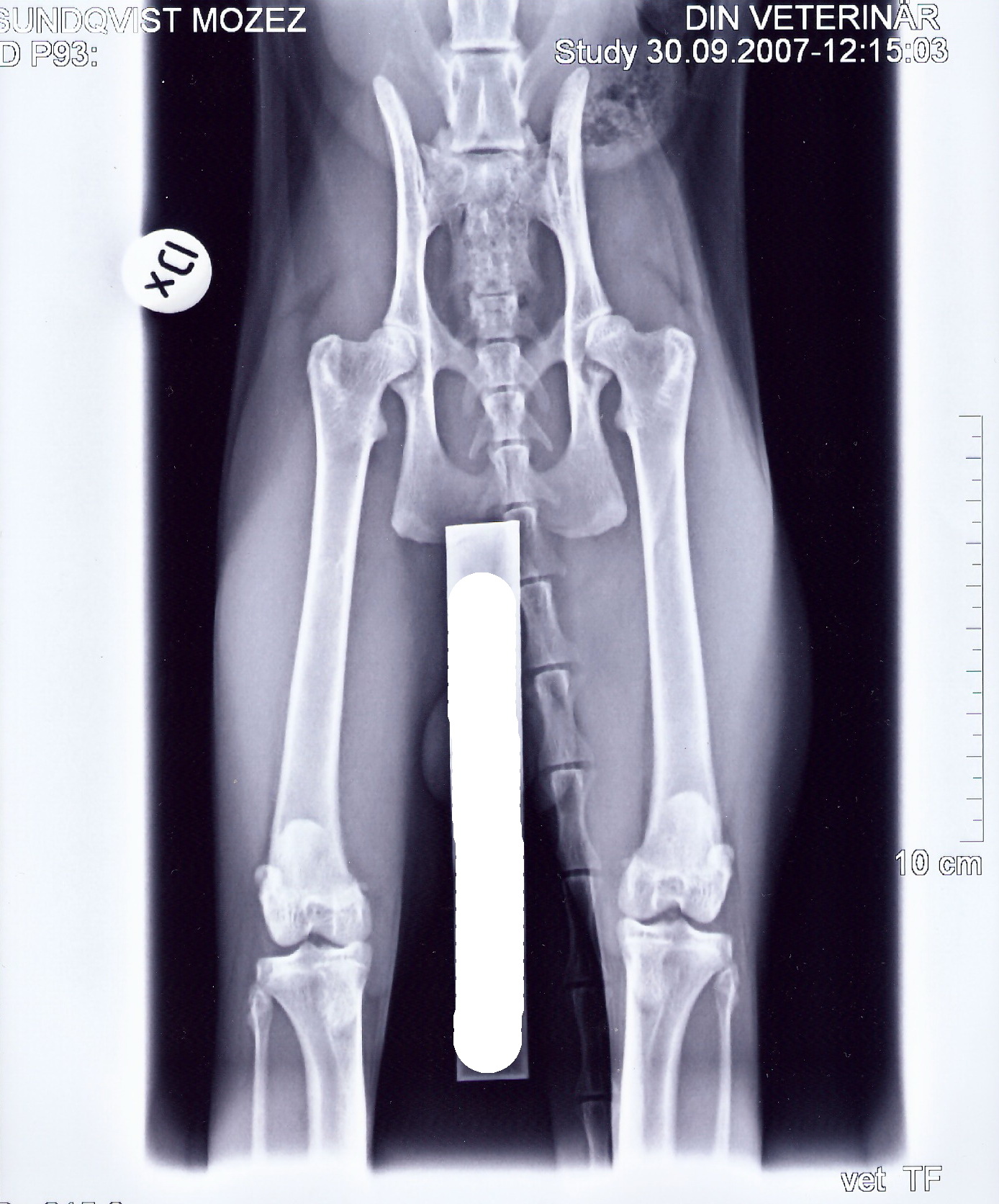 |
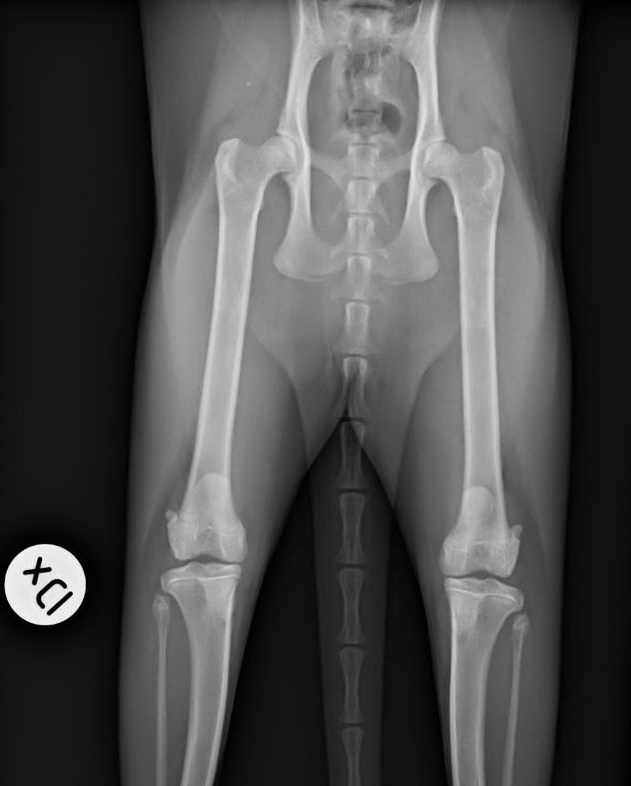 |
| Normal - Normal | 1 - 1 |
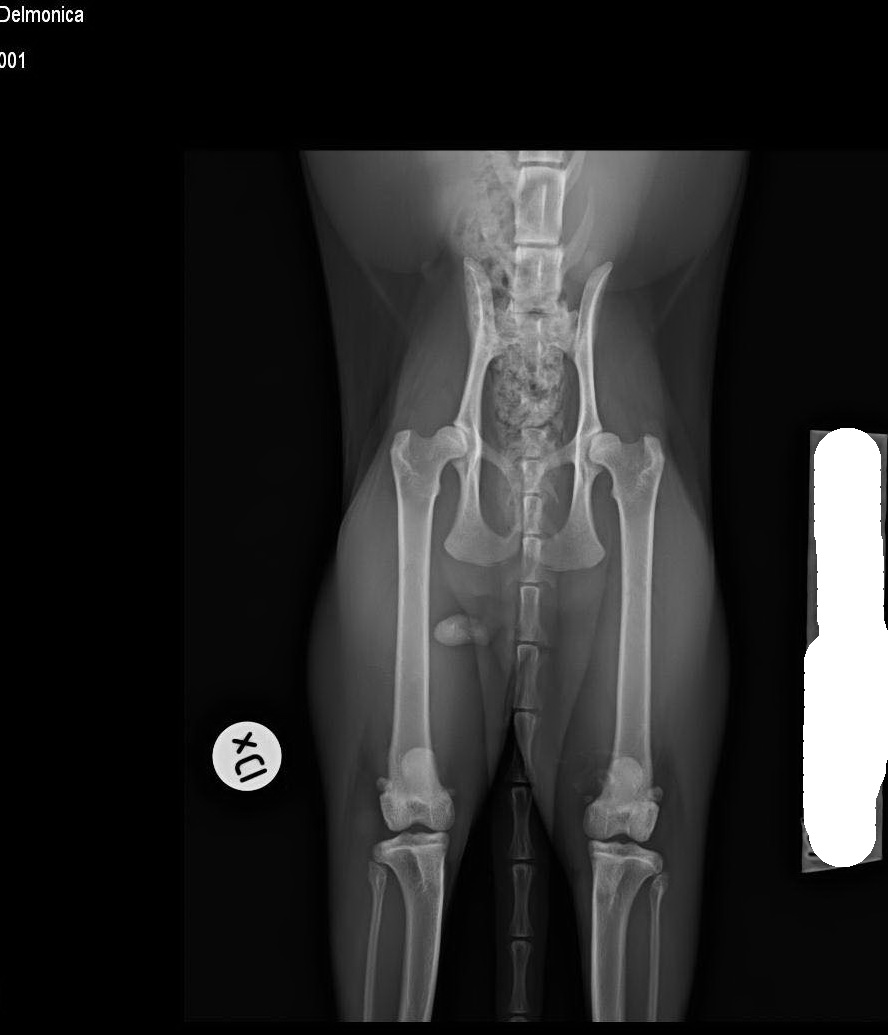 |
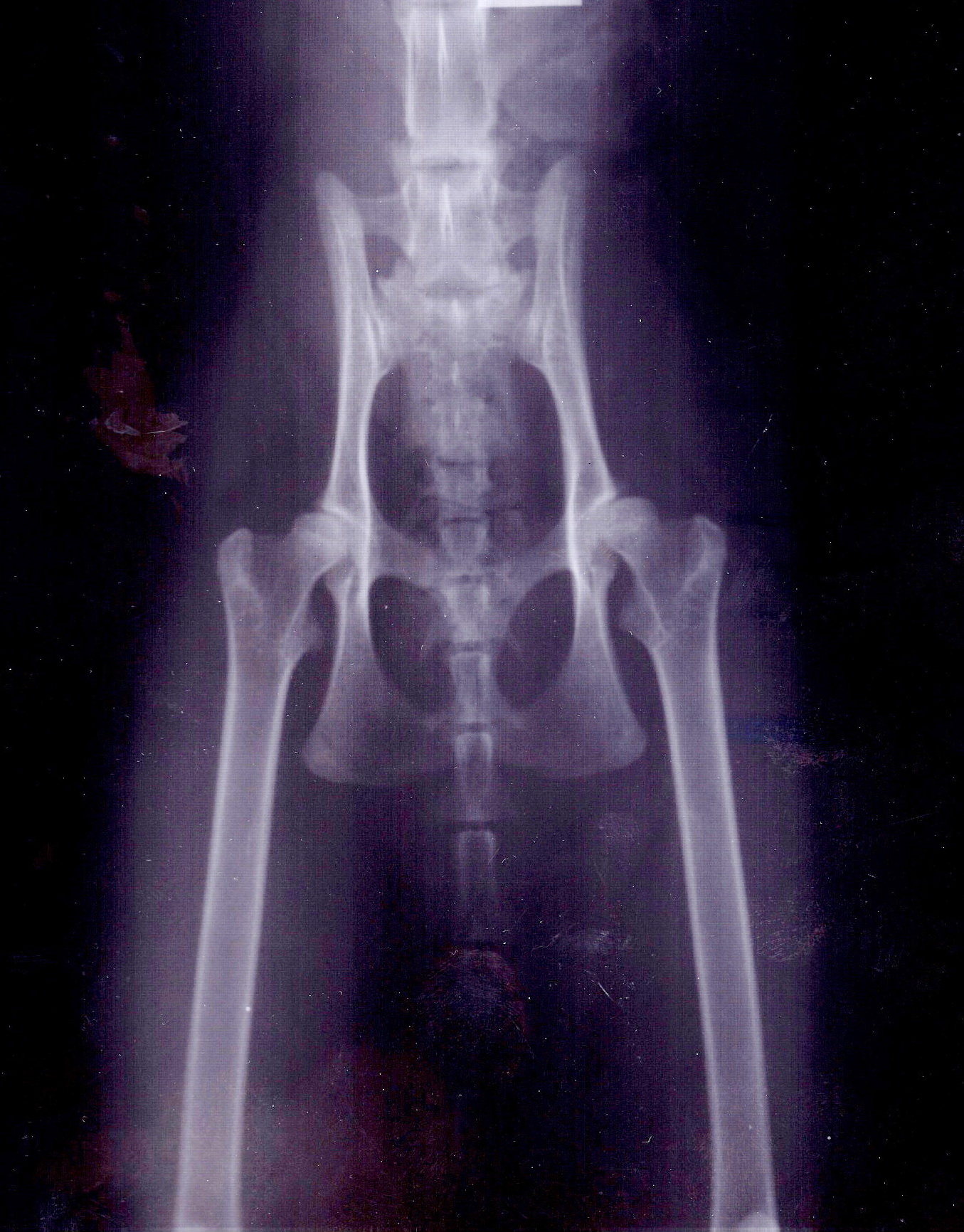 |
| 2-2 | 3-2 |
Heredity?
HD is hereditary! However, it has not been determined exactly how HD is inherited, though it is believed that HD is inherited polygenically recessively.
Polgenic recessive, means that several genes are involved and control whether the cat develops HD or not (same as in dogs).
The cat must inherit a defective version of one or more genes from both parents for symptoms to occur.
This is probably why the problem is seen as so tricky, as you can very well mate two cats that have been judged to have good hip joint status, but still have offspring with bad hips and there are those who have mated cats with bad hips and have offspring with completely normal hips.
A cat can thus carry the predisposition for HD, even though it got fine hips.
Unfortunately, as per today we do not know which genes are involved in the onset of HD, if we had known that would have made everything so much easier.
Instead, it is recommended that each cat to be used in breeding is assessed by a specialist using x-rays to see if its status is good or bad.
As I said, it does not guarantee that the offspring will be free of hip joint problems, but it significantly reduces the risk of the offspring being affected, this can be clearly seen from the statistics of the health program.
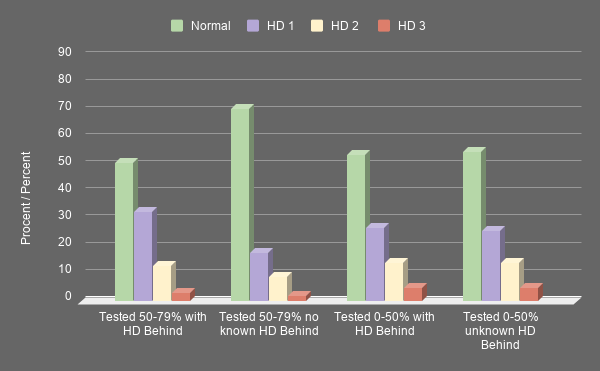
The health program's recommendations
The health program recommendations are that all Maine Coons should be tested for HD before they are used in breeding. The aim is to reduce HD within the breed. The HD grading is done for each hip joint and is divided into grades "normal", "1", "2" and "3", with normal to grade 1 (on the worst hip) being approved for use in breeding.
Grade 1 cats should be mated exclusively with a cat with normal HD status.
Grade 2 and 3 are classified as moderate to severe HD and those cats should not be used in breeding.
Offspring of parents mated according to the Health Program's recommendations have better hips than offspring of parents where hip joint status is not known at all.
Here is an article with statistics if you want to delve more into this: HD Analysis for Maine Coon (Part 2).
Does the health program really work, since there are still so many cats actually getting HD?
In 2019, the results of a large study conducted at SLU were released, they wanted to see whether the health program had the intended effect or not. They were concerned that the proportion of cats with HD was still so high despite breeding in accordance with the health programme's recommendations. The frequency of HD among the examined cats was more or less at the same level as when the health program started. This gave the appearance that the program was not working.
But when a researcher at SLU, Matt Low, broke down the statistics by consanguinity, you could see that the health program was actually effective. The cats descended from individuals bred in accordance with the health program recommendations had a lower incidence and milder forms of HD.
But during these 20 years that the health program existed, other things had also happened, which provides an explanation for why the incidence is still relatively high among the cats tested annually.
The number of Maine Coons X-rayed is many more today, which leads to the discovery of more victims.
Breeders around the world have become more aware of the health program and started testing their cats, which then have an unknown HD background. In this study, it is also said that the cats have generally become larger, which has been shown to be significant, when they analyzed the data, the researchers could see a connection between large cats and hip dysplasia. They then made a choice to study the connection between genes for the size of the cat and the occurrence of hip dysplasia more closely. They were able to state that as the breed's cats increase in size, the hips become worse. For that reason, we should avoid selecting for additional size in breeding.
Fortunately for breeders and cats alike, the incidence of hip dysplasia can be reduced through health programs and selective breeding.
.
Sources:
https://www.slu.se/ew-nyheter/2019/11/hoftledsdysplasi-ar-arftligt-och-vanligare-hos-stora-katter/
https://www.nature.com/articles/s41598-019-53904-w










